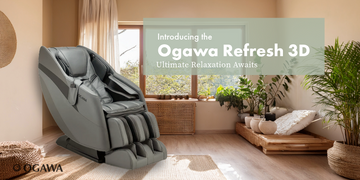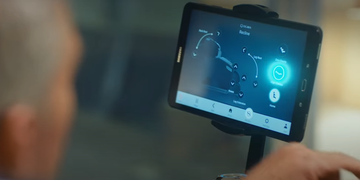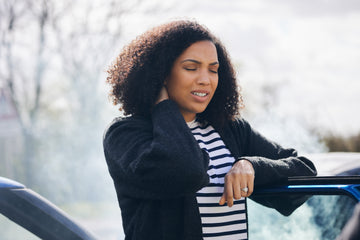The recommended amount of sleep for adults is 7 to 9 hours each night. Unfortunately, too many of us have difficulties falling asleep (or staying asleep) that result in waking up feeling groggy or losing steam midway through the day. This sleep deprivation can also lead to more serious health risks such as high blood pressure, weight gain, or heart disease.
One of the possible solutions to help you get more sleep is the use of pressure points. We’ve prepared a guide to pressure points for sleep, with information on what they are and how to use them. Follow these tips to get better, restorative sleep and say goodbye to sleepless nights.
What Are Pressure Points?
Before we dive into using pressure points for sleep, what are they? Pressure points are spots on the body that correspond to the acupressure points used in traditional Chinese medicine. Practitioners believe these pressure points are each related to different flows of energy within the body. Through acupressure and reflexology, they manipulate pressure points to help with different healing treatments, including helping you sleep more easily.
Common Sleep Pressure Points
Throughout the body, there are different identified pressure points meant for different results. This includes different sleep pressure points as well as those for headaches, nausea, anxiety, and a number of other conditions. The most common pressure points for sleep are:
- Yin tang, above the bridge of the nose and between the eyes
- An mian, on the neck behind the earlobes
- KD1, located in the middle of the foot
- KD3, just above the heel on the inside of the foot (also known as the Taixi)
- LV3, on the foot where the big toe and next toe connect
- SP6, inside the lower leg and above the ankle
- PC6, on the arms a few inches above the hands
- HT7, the outside of the wrists
Different studies have been conducted yielding results suggesting their correlation to improved sleep quality and treating common sleep disorders like insomnia. While this list of pressure points for sleep is well-rounded along the body, there are other sleep pressure points you can try, as well.
Ways to Use Pressure Points for Sleep
Knowing where pressure points to help you sleep are isn’t enough, you also need to know how to use them. There are different methods for engaging pressure points for sleep. The biggest three are:
- Manual stimulation
- Acupressure
- Reflexology
Manual Stimulation
There are some pressure points that make you sleep which are most easily stimulated manually. The yin tang pressure point for sleep, for example, is easy for you to engage yourself using your hands. Applying pressure to the yin tang sleep pressure point may help with insomnia, restlessness, and irritability.
Some massage techniques, like lymphatic drainage self massage, may also coincide with using pressure points to help you sleep. The manual stimulation method is limited to only one or two pressure points for sleep at any given time, however, due to only having two hands. What about ways to stimulate more pressure points for sleep at once?
If you opt to manually stimulate pressure points to help you sleep, be sure to use proper form. Apply even, deep pressure and rub the pressure points in a circular or up-and-down motion. For areas of the body like your feet or arms, you can do this for 20 to 30 seconds. For the yin tang sleep pressure point, apply manual pressure in 5-second increments, instead.
Acupressure
Acupressure is the application of pressure against areas of the body to clear blockages from vital energy pathways called meridians. Where manual stimulation of pressure points to help you sleep is limited, acupressure methods that impact multiple sleep pressure points at once may increase its overall effectiveness.
For example, many people looking to use pressure points for sleep have turned to massage chairs for aid. A luxury full body massage chair applies pressure on the body from your neck all the way to the soles of your feet. Massage chair rollers beginning at the neck area engage the an mian sleep pressure point. Not only is this spot one of the most common pressure points that make you sleep, it may also help with conditions like headaches or vertigo.
A full body massage chair uses air pressure massage along the arms and legs, hitting multiple pressure points for sleep like the KD3, SP6, and PC6 at once and giving you the best experience possible. Not only are you deepening your relaxation through the different types of massage techniques available from your massage chair, but the air pressure massage functions are applying acupressure to sleep pressure points to help improve overall sleep quality. The benefits of massage for sleep cannot be overstated.
Reflexology
Another common method for stimulating pressure points for sleep is reflexology. While it can refer to pressure put on the hands and ears, reflexology massage most often refers to pressure applied along the feet. With several of the most common sleep pressure points being located on your feet, learning how to massage feet for better sleep can be very effective.
Manual stimulation of foot pressure points for sleep can help, but finding ways to engage multiple sleep pressure points at once is better. Once more, full body massage chairs are valued for their electric foot rollers, incorporating reflexology into your massage experience. Foot Rollers provide kneading to all of the right places, releasing tension and engaging pressure points to help you fall asleep.
There are many pressure points for sleep located along the body from your head to your feet. Knowing how to stimulate them, whether manually or using a more effective method such as a massage chair, could help you get better sleep. Healthy sleep habits are critical for our overall well-being, so use the techniques from this guide and get the good night’s sleep you need.
Learn more about the benefits of owning a massage chair and how they could enhance your lifestyle then compare massage chair models to determine which is best for you.





